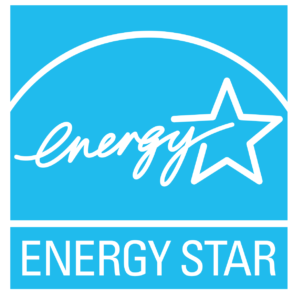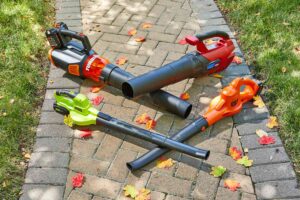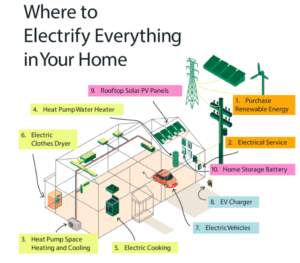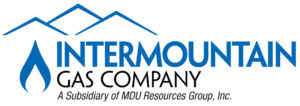Energy and Buildings
It takes a lot to keep the lights on in Hailey - the design of your home or commercial space can have a big effect on our environment, your health, and your wallet.
Some energy efficient technologies have been around for decades, while other new technologies and innovations are entering the market at a rapid rate. With the single-largest federal investment in America's climate and energy security passed into law in 2022, there is also a lot to keep track of in terms of tax credits, rebate programs, and infrastructure investments.
Whether you've never heard of a "heat pump" before, you're building your first home, or you're looking to make big moves with reducing your carbon footprint, you've come to the right place.
This page is designed to serve the citizens of Hailey and our surrounding community members, providing information and resources on making your home and/or business more energy efficient, powered on cleaner energy, and designed to save you money on your energy investments wherever possible.
If you're new to these topics, check out this video from Energy Star to get started.
Energy audits are conducted by professionals who do a walkthrough of your house, identifying how you like to be comfortable in the home. They may use equipment like air blowers or infrared cameras to check where air or energy is being lost. Reviewing your heating/cooling appliances and energy bills will help identify how you can best prioritize energy efficient improvements.
Idaho Power provides more details about energy audits here: https://www.idahopower.com/energy-environment/ways-to-save/savings-for-your-home/home-energy-audit/
Community Experiences:
Teresa:
After I applied online through Idaho Power ($99 for electric, $149 for gas homes), an agent made an appointment for a visit. The auditor looked in every nook and cranny of the house; attic, crawl spaces, interior and garage. He thoroughly inspected windows, doors and heat sources. The audit evaluates the current home energy use. Recommendations are based on cost of improvement versus savings. The audit took about 2-3 hours.
The full report was sent about 2 weeks after inspection. The energy inspection from Idaho Power is highly recommended. Not only did I learn a lot about my house, but also received some low cost, DIY suggestions to help with drafts and comfort. The overall goal is to decrease energy usage and cost. The audit provided a baseline for energy improvements for the home. It gives me greater peace of mind regarding my carbon footprint.
Idaho Power offers options to source your electricity from renewable sources like wind and solar. Signing up for programs like these can be an option even for renters, without needing any physical modification to a home. The Clean Energy Your Way - Flexible program adds an extra penny per kilowatt-hour.
Idaho Power provides more details about this process here: https://www.idahopower.com/energy-environment/green-choices/clean-energy-your-way/clean-energy-for-your-home/
The energy audit may point you towards upgrades to your building envelope to be more efficient. This will reduce the work that your heating or cooling system needs to do, reducing your utility bills.
A tight building envelope will also increase indoor air quality during wildfire season. In Idaho we are unfortunately familiar with smoky summers and autumns. Be healthier and save money too! Building envelope improvements include:
- Adding weather stripping around doors and caulk around windows.
- Adding insulation to your attic and walls.
- Properly sealing the ductwork throughout your home.
- Properly insulating ducts in crawl spaces and attics.
Energy Star has resources on these home improvement steps: https://www.energystar.gov/saveathome/seal_insulate

Installing and setting programmable thermostats to automatically adjust the temperature at night or while you are away can save you 10 percent annually on your energy bills. Why not get smarter with home energy use to improve your comfort and lower costs?
Energy Star describes the benefits of smart thermostats here, along with a product finder: https://www.energystar.gov/products/smart_thermostats
The Wood River Valley has a fantastic biking network for road, gravel or mountain bike enthusiasts, linking communities together by our fine Wood River Trail. If you love commuting or running errands on your “acoustic” bike, more power to you. If you could use a little boost to get out and enjoy the fresh air, get some exercise, and run around town conveniently with a smile on your face, consider an electric bike.

The many local bike shops in the valley would be happy to discuss your riding preferences and match you up with an appropriate model. People are discovering e-bikes are so efficient and fun that in some European countries over 50% of bike sales now are electric.
Read about life with e-bikes here:
- Electric Bike Basics: https://www.rei.com/learn/series/electric-bike-basics
- My E-bike changed My Life: https://slate.com/business/2023/06/e-bike-buying-changed-my-life.html
Community experiences
Lucy, octogenarian visitor to the valley:
My e-bike makes it possible to explore areas that I wouldn’t have the confidence to go otherwise. My bike gives me the ability to do more climbing if I have to (higher altitudes out West!) and go more distance if need be. That means I can try new areas and keep up with riders of different abilities.
Imagine a spring morning where the only sound is the birds chirping or the gurgle of the Big Wood River, instead of the ear-splitting roar of your neighbor’s gas-powered lawn mower. This cleaner, quieter future is within reach!
Switching to electric mowers, leaf blowers, trimmers, and snow blowers offers a multitude of benefits beyond just noise reduction. These eco-friendly powerhouses significantly cut down on air and noise pollution, improving the health of both your yard and your neighborhood. Research provided by the California Air Resources Board shows that a new gas-powered lawn mower running for 1 hour produces similar emissions to the average car driving for 100 miles. By switching to electric yard tools, you can say goodbye to heavy equipment, gas can refills, messy oil changes, and expensive engine maintenance! Most electric yard tools come with a cordless option now too, using the same kind of battery as cordless drills. 
The range of electric products that can replace conventional gas-powered units constantly grows, with models from manufacturers such as DeWalt, EGO Power+, Makita, Ryobi and others available at your local hardware or home improvement store.
Community experiences
Rob from Hailey:
I’ve always used a heavy gasoline-powered snow blower but I was never sure if it would start up when needed for the first snowfall of the winter. I had to make sure the spark plug and the gasoline were fresh and, of course, I had to make sure the motor oil was clean and at the “right” level. I needed a change of clothes because I would always end up smelling of exhaust when I used it. In the spring I would put an additive in the gas tank so that the old gasoline wouldn’t coat the carburetor over the summer requiring a new one.
That has all changed with my new battery powered all-electric snow blower. In the fall I need to make sure the batteries are charged and I slide them into a chamber on the snow blower and I’m ready to go. The model I have is two-stage like its gas-powered predecessor and has a 24” wide clearing width. I watched several reviews online and was reassured this machine could do the job. I have not been disappointed. Although not as heavy, it is a joy to use. When the snow falls, I am ready!
Bill from Woodside:
We have a small townhouse with an equally small yard. I was tired of dealing with the loud stinky gas mower, but we weren’t thrilled with a push reel mower either, especially after long trips when the grass got high. We got an 18V Ryobi ONE+ mower. It is fine for our yard, and folds up small to store in the winter, without any fluids going bad or dripping. If we had a bigger yard we’d probably go with a wider and 40V model for longer run time, but this fits our use case.
Well first let’s be honest: in the alpine desert environment of the Wood River Valley, you can dry clothes on sunny day in a hot second with a drying rack or clothesline. Both of these easy options save energy and are gentler on your wardrobe. However, if you are consistently pressed for time and want a cleaner, automated option, consider replacing your old gas dryer with an electric or heat pump clothes dryer. An advantage of heat pump clothes dryers is they often are able to plug in to a standard 120V receptacle, as they reduce power consumption compared to a standard 240V electric dryer.
Energy Star has more details on heat pump dryers here: https://www.energystar.gov/products/heat_pump_dryer.
Induction uses electromagnets to heat pots and pans directly, so the stove will stay relatively cool even as the pot heats up. Benefits of induction stoves include no indoor air pollution from burning natural gas or propane, faster cooking times, more precise temperature control, higher energy efficiency and thus lower utility bills, and ease of cleaning due to the flat cooktop. Induction cooktops are also safer to operate since there is no open flame and they shut off automatically once the cookware is removed.
Portable induction cooktops such as those offered by Duxtop are low-cost, simple and compact options for renters that want to use induction instead of gas. They can also provide a good trial for homeowners before deciding on a larger stove.
Though most pots and pans will work on induction stoves, cookware made solely of aluminum, copper, or glass will not. Outlets such as Home Depot and Lowe’s offer delivery of models and installation in the Wood River Valley. In cases where you do not have an existing 240V outlet nearby with an appropriate circuit breaker rating, some electrical work by a local contractor may be required first.
Can you learn to love an Induction Stove? https://www.newyorker.com/culture/kitchen-notes/learning-to-love-an-induction-stove
Community experiences
Elizabeth from Hailey:
Our gas range was relatively new and worked fine so it was kind of hard to justify removing it and buying new. However, I hated the smell of gas that stayed in our tight house every time we cooked and we loved our Duxtop counter-top induction burner so much that I’d stopped using the gas stovetop almost completely. The Building Material Thrift store was happy to pick up the gas range and sell it to someone who still thought they wanted gas in their home. We checked out Consumer Reports for background information and jumped on ordering our LG model LSE4617T - sight unseen - from Home Depot. It took about 3 months for it to be delivered due to post pandemic slow downs and then we installed it (plug it in and push it in place) ourselves.
We recommend going induction completely! No more gas leakage, easy to keep clean, incredibly efficient cooking and baking and because the induction doesn’t heat the pan directly, neither the stove top or the handles of pots gets so hot that you’d burn yourself. The pan issue - We were lucky in that we already had mostly induction friendly cookware - a magnet needs to stick to the bottom of the pan for it to work on induction. Our cast iron, stainless steel and enamel cast iron all worked and we replaced our soup pot with one we found at the thrift store for $15.
Our biggest problem - We didn’t have a 240 volt outlet behind our gas stove and had to have an electrician bring wiring from our panel (40 amp) around to the site for the necessary plug. At $2000 it cost about as much to bring around the power as the stove and took some time to get the service scheduled. Plan ahead and have it done as soon as you order. Or earlier.
Heat pump water heaters use heat pump technology to transfer heat from one place to another, extracting heat from the air and moving it into a tank to heat water. As a result, heat pump water heaters are about 3-4 times more efficient than gas furnaces in the Wood River Valley climate zone, and 2-3 times more efficient than electric resistance heaters. These efficiency improvements translate to on-bill savings.
These installations should be discussed with contractors so the model is an appropriate fit for your uses. Considerations include:
- Size
- Location, which must have access to an adequate volume of air
- Voltage level (120V or 240V) and access to the appropriate circuits
- Temperature of the area and whether a “hybrid” model, which can operate at room temperatures below 40 °F, is required.
Given these factors, it’s worth a fair bit of research on your part to help you in your discussions with contractors. Some useful links include:
- Heat Pump Water Heaters: Everything you need to know: https://goodbeeplumbinganddrains.com/the-pros-and-cons-of-heat-pump-water-heaters/
- Energy Vanguard: Living With a Heat Pump Water Heater: https://www.energyvanguard.com/blog/living-with-a-heat-pump-water-heater/
Community experiences
Mitch from Ketchum:
We have an AO Smith HP water heater. It will heat your water to whatever temperature you want and do it at a fraction of the price of a gas or electric hot water heater. Installation should be pretty much the same as for any other hot water heater.
Heat pumps are electric heating and cooling systems that move heat indoors in the winter and draw heat outdoors in the summer. Instead of burning fossil fuels, they are powered by electricity to move, rather than to create, heat. Since heat pumps can provide both heating and cooling, they are a good option for residents who are replacing their furnaces and who also wish to install AC
Heat pumps had a reputation for not functioning well in cold climates, which was a legacy of old technology. However, today’s cold climate heat pumps can provide efficient heating at outdoor temperatures as low as -15 °F, if the appropriate model is selected. There are several kinds of heat pumps and the most cost-effective option will depend upon the existing system type, which will vary home by home. Consult with your friendly local contractor.
Though a heat pump will not function when the electricity goes out, most gas furnaces will not either. Gas furnaces require electricity to run their circuit boards, relays and blower motors. Thus, it is important to upgrade your home’s building envelope and to consider a backup heating system regardless of whether you have a gas or electric heating system.
Some references on the different types of heat pumps include:
- Air source heat pumps for homes with ductwork: https://www.energystar.gov/products/air_source_heat_pumps
- Air source heat pumps for homes without ductwork: https://www.energystar.gov/products/ductless_heating_cooling
- Geothermal (ground source) heat pumps: the Cadillac of heat pumps: https://www.energystar.gov/products/geothermal_heat_pumps
Community experiences
Mitch from Ketchum:
We installed a whole house heat pump. It connected to our old forced air system. It works very well, even heating our home at below zero temperatures. The backup system is also electric. Much more cost effective than all electric, though probably slightly more than a gas furnace. Be sure that it is sized properly. Too small and it won’t adequately heat your home, and if it is too large it will not work as efficiently.
In many ways, the Wood River Valley is an ideal setting for electric vehicles (EVs), thanks to our low-cost electricity as opposed to relying on more costly imported gasoline. Commutes within the valley are modest distances, and modern EV ranges of well over 200 miles means day trips to Stanley, Twin Falls or Boise are feasible. Forget icy mornings spent fiddling with frozen engines or chilly interiors; EVs can preheat the cabin and start instantly, even in winter conditions.
But the benefits go beyond convenience. Electric vehicles mean cleaner air for both tourists and local residents. And with lower maintenance costs and potential subsidies, owning an EV can be a financially sound choice for both eco-conscious individuals and local businesses. Start with an EV as your replacement second car, and you’ll soon be thinking about upgrading your first.
The number of models, features and incentives available change constantly, but a good overview of options can be found at PlugStar: https://plugstar.com/guide
Community experiences
Kat from Hailey:
We are a two-car family and we were very happy with our Subaru Outback and Toyota Highlander. However, I’d always had an itch to see if I would like having an EV; if it would make sense for us and our needs. So I decided to test out my idea with a low entry cost (below $10k) Chevy Spark EV. We found the car fun to drive, charging to be easy, and all of a sudden we were saying “if we could get one with more range so we could use it for trips to Boise and elsewhere, that seems to make sense.” So our trial was a success and we flipped the Spark easily via Carvana and purchased a used Chevy Bolt that we found in Colorado. I flew out there and drove it back to Hailey during winter no problem (Ok, it was my first drive in it, so there were some learnings that happened along the way with range and temperature, but I had watched a ton of videos in advance, so was prepared for it. It was kind of fun figuring things out also). We figured we would keep our other car with towing capability, and got rid of the Subaru and haven’t regretted it since.
While the used Bolt at the time did not qualify for tax credits, it has been incredibly valuable as a Valley car. With upgraded tires and great snow handling it manages fine during winter. I watched Jeeps spinning out on starts while I felt like a little tank. Clearance is more of an issue when the snow is firm and deep, but I only chose not to drive it once all winter (and we had a lot of snow ’22-’23). Preheating it while plugged in, front & back seat heaters, and a steering wheel heater make it super comfy to jump in when cold. The range of 200-250 miles depending on season has been fine for runs around Idaho: to Boise, Twin Falls, Idaho Falls, Stanley, Cascade and even Salt Lake City. The regenerative braking over the mountain passes is great, manufacturing more energy on the downhill and saving on brakes.
Chevy surprised us. For a relatively inexpensive up-front cost the Bolt is remarkably solid, super fun to drive, and has the unreal torque and smooth passing ability all EVs have. The operating costs are very low, with little maintenance to speak of. We save hundreds of dollars per month in gasoline, and simply charge off a standard 120V outlet in the garage overnight. It has also cut down on the use of our other vehicle, saving us more on its wear and tear and general upkeep. The Bolt has taken over as the preferred choice for every short or medium range trip. It is far more pleasant to drive and has lower operating costs, so it’s easier on the budget.
For a new EV user, sure, there is a bit of a learning curve regarding range expectations which may vary during seasons. And figuring out where to charge if you are making long trips. Apps like A Better Route Planner (ABRP) and PlugShare are good resources. If you are in the Valley or just bouncing down to Twin, you’ll hardly need to bother with charging on the road. If you do, it’s not rocket science once you figure it out and allocate some time for charging breaks.
Whether you are an eco-conscious sun worshiper, a doomsday prepper, or something in between, there’s something for everyone with a home solar system which can be backed up by battery energy storage. Home solar/battery systems can offer several benefits: reducing reliance on the grid and hedging against rising energy costs, having backup power during outages (remember Christmas of 2009?), taking an opportunity to leverage significant home energy system incentives, and increasing home value.
These definitely are systems that warrant discussions with a friendly local contractor that can help you with sizing, configuration and installation in our greater, aptly named Sun Valley area. Constant improvements in solar panel and battery storage technology means costs have been coming down consistently over the past decades.
Community experiences
Mitch from Ketchum:
Our current PV system is about 9.2 kWh and is ground mounted because our roof aspect faces north. It works great with no maintenance (except removing snow following large storms) and covers nearly all of our electric usage from May to November. It has been very cost effective.
The solar installer will do an assessment for you on the needed size of your arrays, whether you have good rooftop orientation, and projected payback period.
Contact a Sustainability Staff Member
Emily Williams
Sustainability and Grants Coordinator
Phone: (208) 788-9830 x4231
Email: emily.williams@haileycityhall.orgEmily Rodrigue
City Planner/Resilience Planner
Phone: (208) 788-9815 x2017
Email: emily.rodrigue@haileycityhall.org
 This page was made possible by the hard work and dedication of local citizen volunteers with the Climate Action Coalition (CAC), the grass-roots community awareness and citizen action group for climate efforts in the Wood River Valley. The City of Hailey regularly collaborates with the CAC on events, climate goal-setting, and public outreach. We are so grateful for their presence in our community!
This page was made possible by the hard work and dedication of local citizen volunteers with the Climate Action Coalition (CAC), the grass-roots community awareness and citizen action group for climate efforts in the Wood River Valley. The City of Hailey regularly collaborates with the CAC on events, climate goal-setting, and public outreach. We are so grateful for their presence in our community!
For more information, you can contact the Climate Action Coalition at CACWRV@gmail.com.



 The difference in these financial incentives is where and when the incentive is gained. A rebate will give a homeowner cash back for the upgrade, once it is installed. The tax incentive/deduction will reduce your household's overall taxable income, come tax season. Again, we recommend consulting a tax advisor or other qualified tax resources to understand the financial incentive option(s) best suited for your situation.
The difference in these financial incentives is where and when the incentive is gained. A rebate will give a homeowner cash back for the upgrade, once it is installed. The tax incentive/deduction will reduce your household's overall taxable income, come tax season. Again, we recommend consulting a tax advisor or other qualified tax resources to understand the financial incentive option(s) best suited for your situation. 
